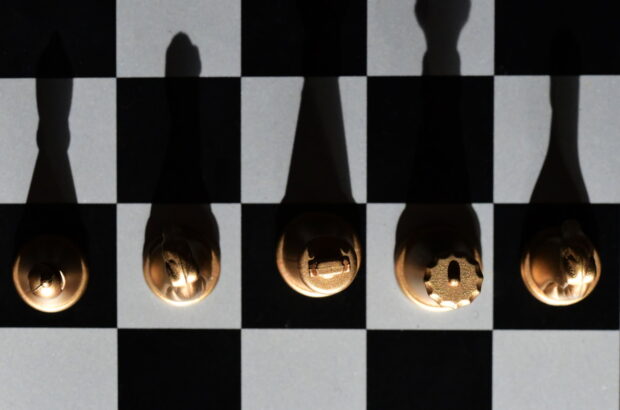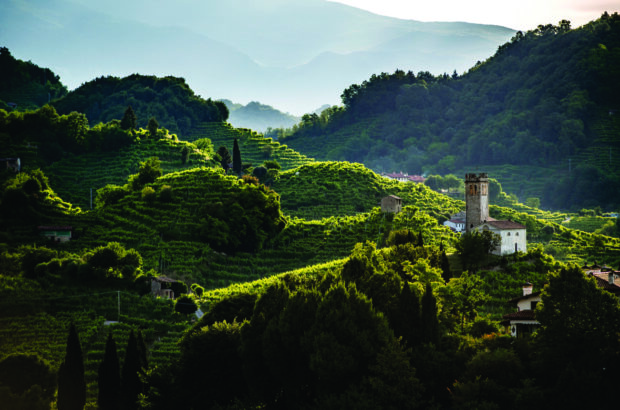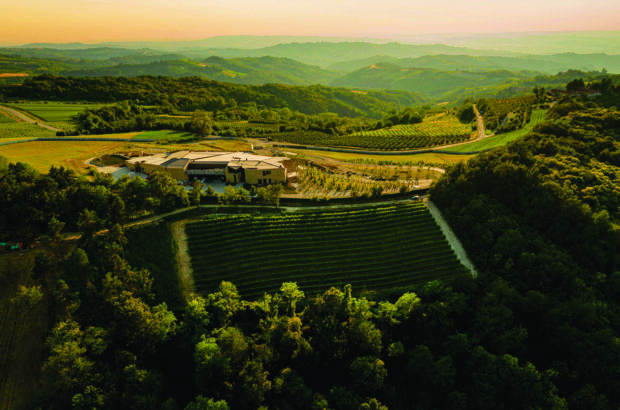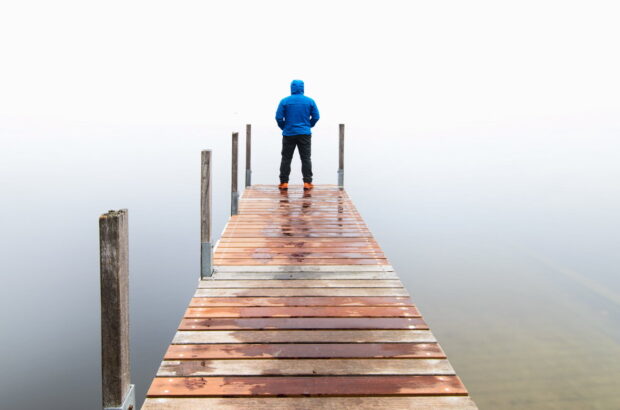A hubbub in Paso Robles
Clive Pursehouse
Riley ‘Hubba’ Hubbard is the driving force behind Hubba Wines of Paso Robles, crafting wines that are unique in the region. Hubbard sources fruit from up and down California’s temperate, maritime-influenced Central Coast, working with organic and sustainably farmed vineyards that share her philosophy. Her goal, she says, is to make ‘approachable young wines with soft tannins and great aromatics that are at once complex and thought-provoking’.
The California native pursued a Master’s degree at Montpellier in southern France, and her time in Europe has influenced her winemaking, which leans towards ‘pure fruit expression while showing a very European sense of restraint and balance’. Hubba’s Mutha Chardonnay (US$50) is a wine of purity and elegance, with complexity and depth from the considerable time spent in mostly neutral French oak. The fruit shows restraint (12.3% alcohol) with flourishes of richness, and the obvious attention to acid preservation means this wine will go the distance. The Mighty (also $50), a blend of Syrah, Cabernet Sauvignon and Grenache, highlights the cool-climate Rhône varieties from the San Luis Obispo Coast, with bright red fruits and savoury spice elements delivered by Carmel Valley Cabernet.
Gimblett Gravels: A preview of 2021
Tina Gellie
It’s always a treat to receive the Annual Vintage Selection case from the Gimblett Gravels Winegrowers Association: 12 reds that show why the free-draining alluvial soils in this patch of New Zealand’s Hawke’s Bay are so prized. Master of Wine Andrew Caillard curates each year’s case and this 14th iteration, showcasing the 2021 vintage, features six Syrahs and six Bordeaux blends. Described as ‘completing the greatest trifecta of vintages ever’ in the district, the long, warm, dry 2021 growing season – culminating in the earliest harvest on record – has delivered an exceptional set of wines. Of the Syrahs, the Trinity Hill, Homage was my pick, followed by Craggy Range’s Le Sol and Smith & Sheth’s Cru Omahu, with the Stonecroft Reserve (from New Zealand’s oldest Syrah vines) also impressing.
Merlot is the district’s most planted red, and Craggy Range’s Sophia (with 23% Cabernet Franc) was the standout. But I noted the increasing role Malbec is playing, notably 28% in Elephant Hill’s Stone Merlot-Malbec-Cabernets blend and 100% in the Saint Clair, James Sinclair – both succulent, floral and fresh. Most of these ageworthy wines haven’t yet arrived on UK shores, but hold out: patience is a virtue.
Quality fizz from unexpected regions
Sylvia Wu

Growers at Devo, Ningxia dig out their vines and tie them to trellises after a harsh winter. Scarves and masks are essential against the cold March winds
Traditional-method sparkling wines come from regions you might not expect. First, from the dry southeastern corner of Wales, Ancre Hill Estates, Blanc de Noirs NV (£38-£45 Widely available via independent merchants) achieved great intensity plus saltwater taffy complexity through long élevage of the base wine (16 months) and four years on lees. Shabo, from the Black Sea coastal Odessa region in Ukraine, only just disgorged its 2015 zero-dosage Grand Cuvée in February; that, along with 60% new oak on the base wine, gives a creamy nose with plenty of buttery texture, ending with umami and almonds.
From the eastern foothills of Helan mountain in China’s Ningxia province, new producer Devo’s first vintage release, the 2018, hints at the sun-drenched region’s potential to make sophisticated sparkling wines: four years on lees without dosage, showcasing ripe peach and caramelised apple combined with leesy structure and good freshness. Finally, from the heart of the Yamanashi prefecture in Japan, Grace Wine’s Ayana Misawa handcrafts a premium-quality Blanc de Blancs from its Misawa vineyard 700m above sea level. The 2016 vintage spent five years on lees and two years under cork, and boasts profound yeasty depth and solid yellow fruits.
A significant birthday
Amy Wislocki
My eldest son Theo, who turned 18 in March, has inherited a taste for Champagne from me and his grandmother. Far more sophisticated than I was at his age… At a small tea party to celebrate the occasion, I opened a magnum of what turned out to be the best traditional-method sparkling, beyond Champagne, that I’ve had the good fortune to taste. Ca’ del Bosco’sAnnamaria Clementi 2014 (£143.25, 75cl, Vinum) is a Franciacorta produced from organically farmed grapes and aged for eight years on lees, a blend of 76% Chardonnay, 15% Pinot Noir and 9% Pinot Bianco, zero dosage. A torrent of white floral scents and flavours, lemon oil and pastry warmth, but oh so fresh, drinking beautifully at 10 years of age.
The other special bottle unearthed was a Hidalgo Amontillado Viejo VORS bottled in 2006 after 30 years’ ageing (now available under a different bottling as Hidalgo Amontillado Napoleon VORS – from £75/50cl at Frazier’s or The Whisky Exchange). It hadn’t been stored in optimal conditions, but I needn’t have worried – it was a masterclass in Sherry brilliance: amber in colour, rich and dry, nutty with hints of beeswax and spice, and a lipsmacking salty tang.
On the Terra Rossa tail
Julie Sheppard

I recently caught up with Sue Hodder, senior winemaker at Wynns Coonawarra Estate in South Australia, for a dinner to showcase her classic Cabernets with Asian food pairings at London’s Lucky Cat by Gordon Ramsay. We tasted new and current releases, including the Black Label Cabernet Sauvignon 2021 and flagship John Riddoch 2020 (£92 Justerini & Brooks, Lay & Wheeler, VinQuinn); very different styles but both with a signature vibrancy. ‘Our cooler climate in Coonawarra gives that freshness,’ explained Hodder.
But it was the older vintages that seduced me, showing how well Cabernet planted in the clay-loam terra rossa soils of Coonawarra can age. Black Label 1991 displayed primary spicy black fruit alongside evolved notes. For Hodder it’s ‘one of the great vintages’ and holds a special place in her heart. ‘I arrived at Wynns in 1993 when we were just getting the 1991 into bottle,’ she said. But star of the show was the John Riddoch 2010 – a ‘dream year’ said Hodder, noting that so far, 2024 has much in common with 2010 in terms of conditions. Poised and elegant, but still with considerable power, the 2010 is drinking so beautifully now (98pts).












